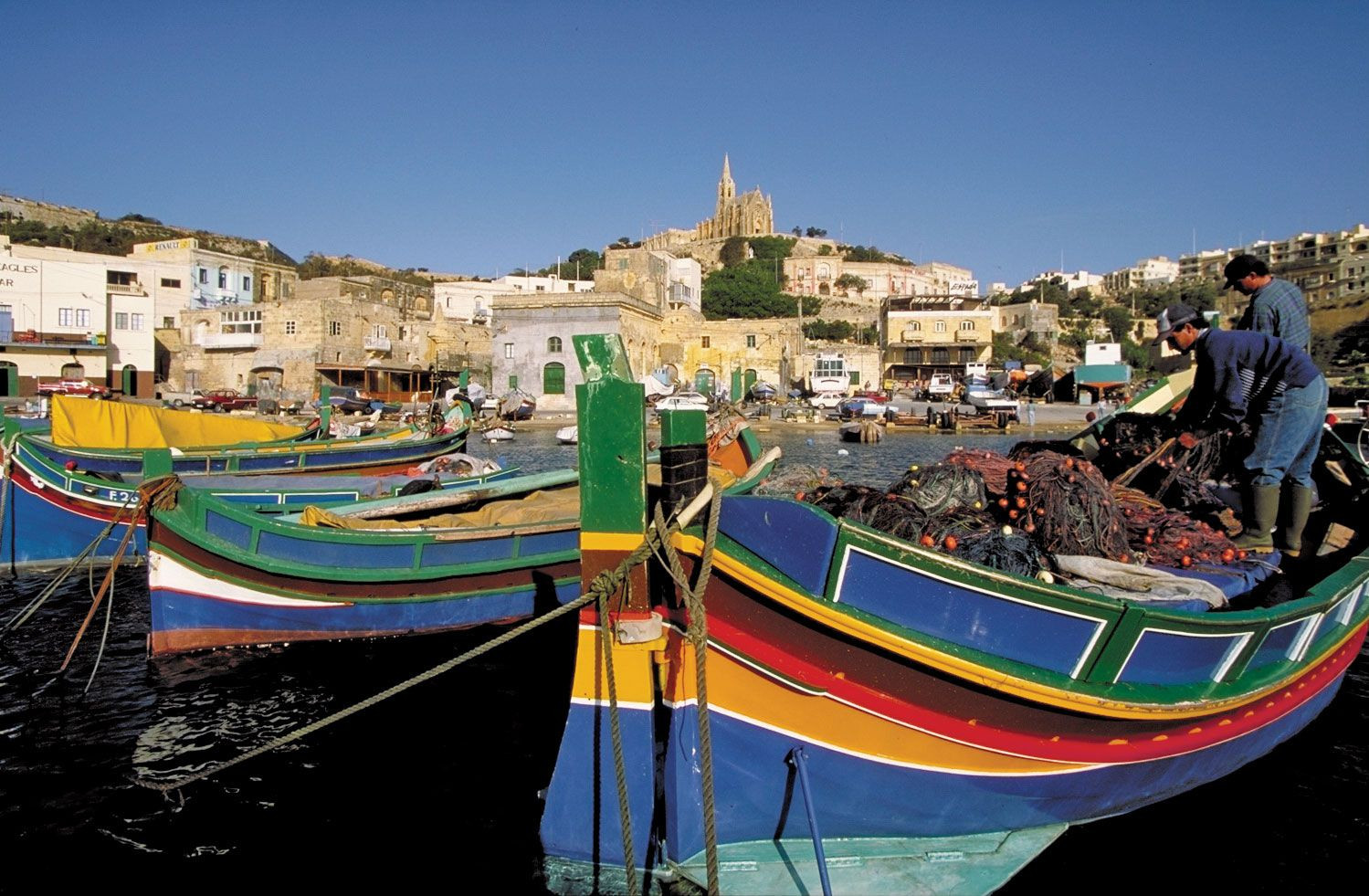Malta, a captivating archipelago nation, is nestled in the heart of the Mediterranean Sea. But Where Is Malta exactly? This island country is strategically located approximately 58 miles (93 kilometers) south of Sicily, Italy, about 180 miles (290 kilometers) north of Libya, and roughly 180 miles (290 kilometers) east of Tunisia. This places Malta at the eastern end of the Mediterranean’s narrow passage separating Italy from the North African coast, making it a significant geographical point in Southern Europe.
Exploring Malta’s Archipelago and Terrain
The nation of Malta is composed of five islands, with the main island also named Malta being the largest. The other significant islands are Gozo and Comino, along with the uninhabited islets of Kemmunett (Comminotto) and Filfla. These islands emerge from the Malta-Hyblean Platform, a submerged shelf bridge linking southern Sicily’s Ragusa Platform to Libya’s Tripolitana Platform. This underwater geological connection underscores Malta’s position as a bridge between Europe and Africa.
Geographical location and physical features of Malta, highlighting its position in the Mediterranean Sea and its island composition.
Malta Island’s Terrain: Escarpments and Plateaus
The landscape of Malta island is distinctly characterized by limestone formations, resulting in dramatic coastlines marked by steep cliffs, bays, inlets, and coves. A prominent feature is the Victoria Lines Fault escarpment, bisecting the island from Point ir-Raħeb near Fomm ir-Riħ Bay to the northeast coast near Għargħur’s Madliena Fort. The highest points are found in the coralline limestone uplands, forming a triangular plateau where Ta’ Żuta reaches 830 feet (253 meters), the island’s highest elevation. Blue clay slopes separate these uplands from the lower areas, and an undercliff zone exists where the plateau descends to meet the sea. Malta’s extensive shoreline stretches for about 136 miles (219 km), offering diverse coastal scenery.
In the northern part of Malta, the escarpment presents a rugged profile with deep embayments. Moving southward, the plateau gradually slopes from elevations between 600 to 830 feet (180 to 250 meters) down to undulating globigerina limestone areas, less than 300 feet (90 meters) high. The western region is known for its deeply carved valleys and undercliff zones, while the eastern side features valley systems leading to central plains.
A picturesque harbor in Malta, showcasing the island’s coastal landscape and maritime activity.
The western coast of Malta is largely high and harborless, presenting a bold face to the sea. In contrast, the eastern coast features Mount Sceberras, a high ridge where Valletta, the capital city, is located. Mount Sceberras divides Marsamxett Harbour and Grand Harbour, historically significant natural harbors. Tectonic activity has tilted Malta northward, creating high cliffs, up to 800 feet (250 meters) on the south and southwestern coasts, which then descend to lower cliffs and rocky shores in the north and east.
Gozo Island’s Landscape: Mesas and Coastal Bays
Gozo, the second largest island in Malta, presents a landscape of broken upper coralline mesas. Ta’ Dbiegi Hill, at 636 feet (194 meters), marks Gozo’s highest point. The island has a gentle slope towards the east, causing the lower coralline limestone to form high cliffs on the west coast, dip below sea level, and then reappear on the east coast at Qala Point. Coastal cliffs on Gozo are marked by semicircular bays formed where sinkholes have been eroded by the sea. Notably, Xlendi and Dwejra bays on Gozo’s west coast originated from collapsed underground caverns. The Azure Window, a famous natural arch that collapsed in 2017, was also located on Gozo, highlighting the dynamic coastal geomorphology of the Maltese islands.
 Gozo island, Malta: Azure Window
Gozo island, Malta: Azure Window
The coastline of Gozo island in Malta, featuring the former Azure Window, illustrating the island’s unique geological formations.
Water Resources and Soil Composition
Malta’s geological structure is conducive to underground water storage due to permeable limestone formations and impermeable blue clay layers. This results in two water tables: a perched aquifer and a mean sea-level aquifer. The primary water source for public consumption has historically been the main sea-level water table. However, the lack of permanent rivers or lakes and significant runoff into the sea have made water supply a challenge. To address this, Malta has implemented an extensive reverse-osmosis desalination program. Currently, desalination plants across the islands supply about half of Malta’s daily water needs, showcasing innovative solutions to manage water resources in an island environment.
Maltese soils are generally young, thin, and immature, lacking significant humus content. Their high carbonate content contributes to alkaline properties. Human activity and construction have further altered soil distribution and composition. Recognizing the importance of soil preservation, Malta enacted the Fertile Soil (Preservation) Act of 1973. This law mandates that soil removed from construction sites be relocated to agricultural areas. Additionally, level areas within quarries are frequently filled with transported soil to enhance agricultural potential.
In conclusion, Malta’s location in the Mediterranean Sea is not only geographically significant but also shapes its unique landscape, climate, and natural resources. From its limestone cliffs and plateaus to its innovative water management, Malta offers a compelling study in island geography and resilience. Understanding where Malta is provides a crucial context for appreciating its rich history, culture, and natural beauty.


 Malta: harbour
Malta: harbour